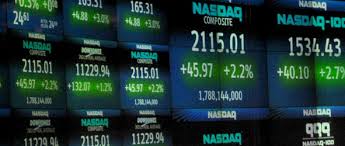- Introduction
- Index numbers are the indicators which reflect changes over a specified period of time in
i. Prices of different commodities
ii. Industrial production
iii. Sales
iv. Imports and exports
v. Cost of living, etc.- They reflect the pulse of n economy and serve as indicators of inflationary or deflationary tendencies.
- Economics index numbers measure the pressure of economic behaviour and are rightly termed as ‘economic barometers’ or ‘barometers of economic activity’.
Definition: “Index numbers are statistical devices designed to measure the relative change in the level of a phenomenon (variable or a group of variables) with respect to time, geographical location or other characteristics such as income, profession, etc.”
According to Wheldon, “An index number is a device which shows by its variation the changes in a magnitude which is not capable of accurate measurement in itself or of direct valuation in practice.”
Edgeworth gave the classical definition of index numbers as follows: “Index number shoes by its variations the changes in a magnitude which is not susceptible either of accurate measurement in itself or of direct variation in practice.”
In the words of Lawrence J. Kaplan, “An index number is a statistical measure of fluctuations in a variable arranged in the form of a series, and using a base period for making comparisons.”
In short, “Index numbers are specialised type of rates, ratios, percentages which give the general level of magnitude of a group of distinct but related variables in two or more situations.”
- Basic Problems Involved in the construction of Index Numbers
- The Purpose of Index Number: The first and foremost problem is to determine the purpose of index number without which it is not possible to follow the steps in its construction.
- Selection of Commodities: Having defined the purpose of index numbers, we should select only those commodities which are relevant to the index. The best solution to selection of items for any index is
i. To split the whole (relevant) group of commodities into various homogeneous sub-groups like cereals, milk and milk products, clothing, iron and steel, electrical appliances and fuel, etc., so that the price movement of various commodities within any sub-group follows almost the same pattern, and
ii. To select an adequate number of representative items from each sub-group.
- Data for Index Numbers: The data should be collected from reliable sources such as standard trade journals, official publications, periodical special reports from accuracy, comparability, sample representatives and adequacy should be borne in mind.
- Selection of Base Period: The period within which the comparisons of relative changes in the level of a phenomenon are made is termed as ‘base period’ and the index for this period is always taken as 100.
i. The ‘base period’ must be a ‘normal period’, i.e., a period free from all sorts of abnormalities or chance fluctuations such as economic boom or depression, labour strikes, floods, earthquakes, wars, etc..
ii. The base period should not be too distant from the given period. The base period should not be too far back in the past relative to the given period to the given because due to dynamic pace of events these days, distant base period is likely to be entirely different from the given period.
- Type of Average to be used: Since index numbers are specialised averages, a judicious choice of average to be used in their construction is of great importance. Usually the following averages are used:
i. Arithmetic Mean (A.M.): simple or weighted,
ii. Geometric Mean (G.M.): simple or weighted,
iii. Median
- Selection of Appropriate Weights: Generally, various items, commodities, say, wheat, rice, clothing, etc., included in the index are not of equal importance, therefore proper weights should be attached to them to take into account their relative importance.
i. Unweighted Indices, in which no specific weights are attached to various commodities, and
ii. Weighted Indices, in which appropriate weights are assigned to various items
According to Bowley, A.L., “The discussion of proper weight to be used has occupied a space is statistical literature out of all proportions to its significance, for it may be said at once that no great important need be attached to the special choice of weights; one of the most convenient facts of statistical theory is that, given certain condition, the same result is obtained with sufficient closeness whatever logical system if weights in applied.”
In the word of Mitchell, “The real problem for the maker of index number is whether he shall leave weighting to chances or seek to rationalise it.
- Classification of Index Numbers
- Price index numbers which measure the general changes in the retail or wholesale price level of a particular commodity or group of commodities.
- Cost of living index numbers are intended to study the effect of changes in the price level on the cost of living of different classes of people.
- Quantity index numbers which are indices to measure the changes in the quantity of goods manufactured in a factory, e.g., the indices of industrial production or agricultural prod
Click here for government certification in Quality
Click here for government certification in Management





1 Comment. Leave new
Nice work..